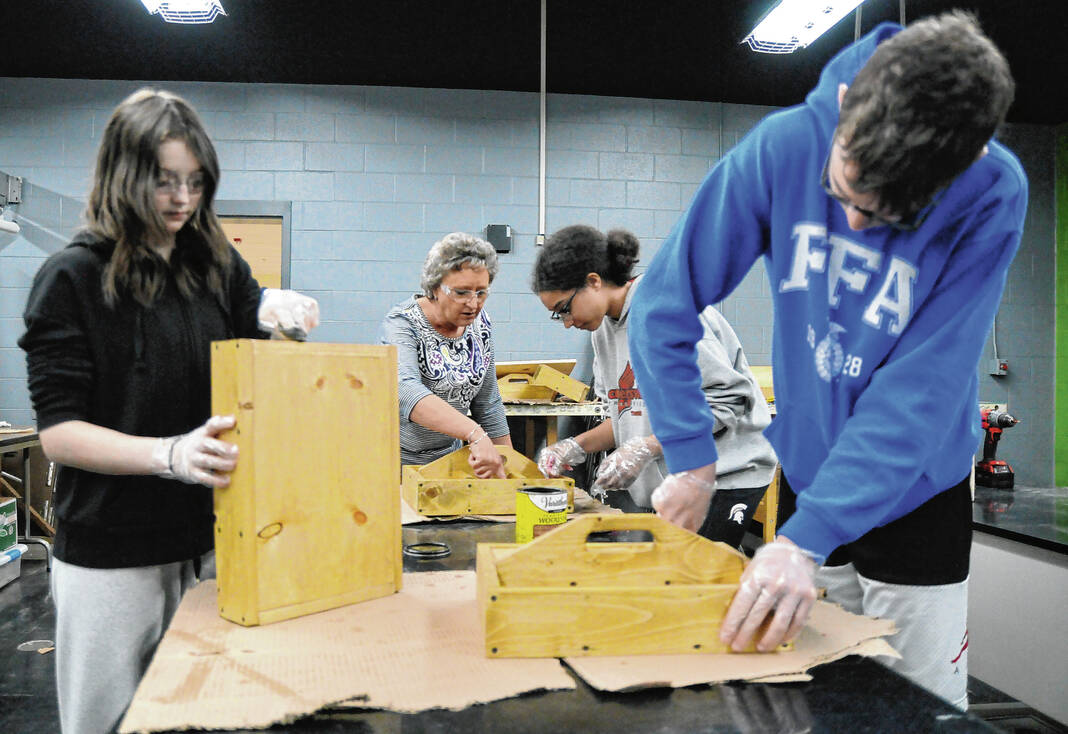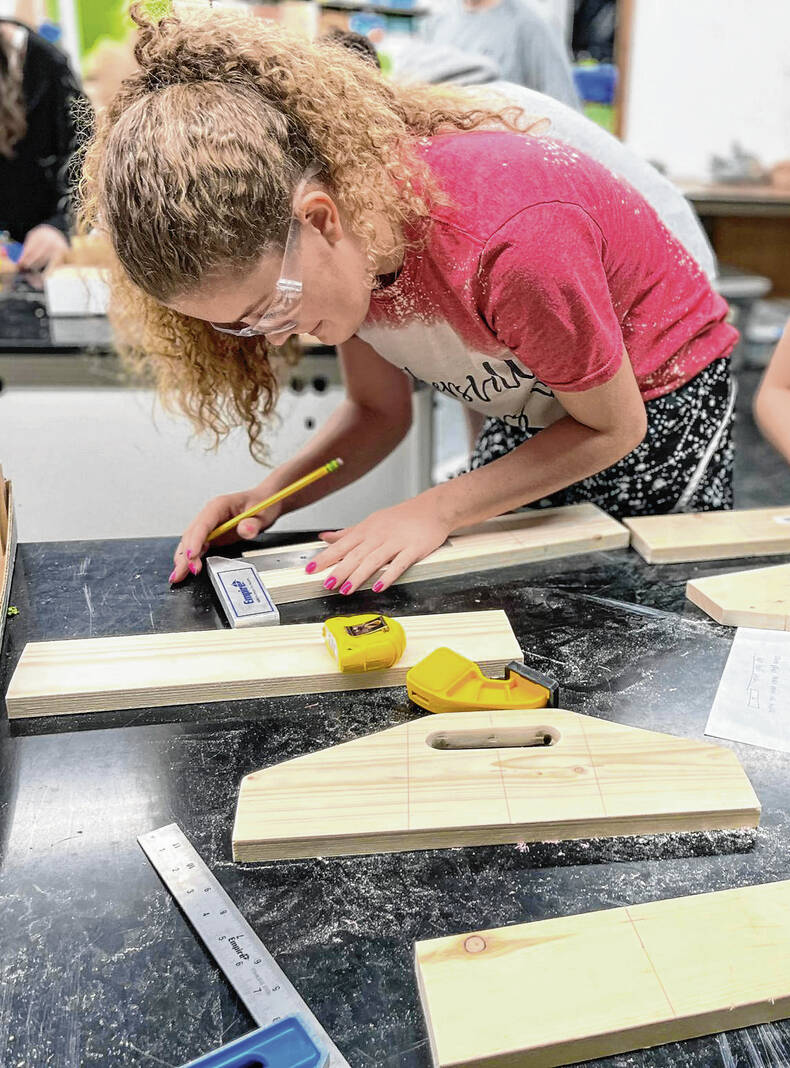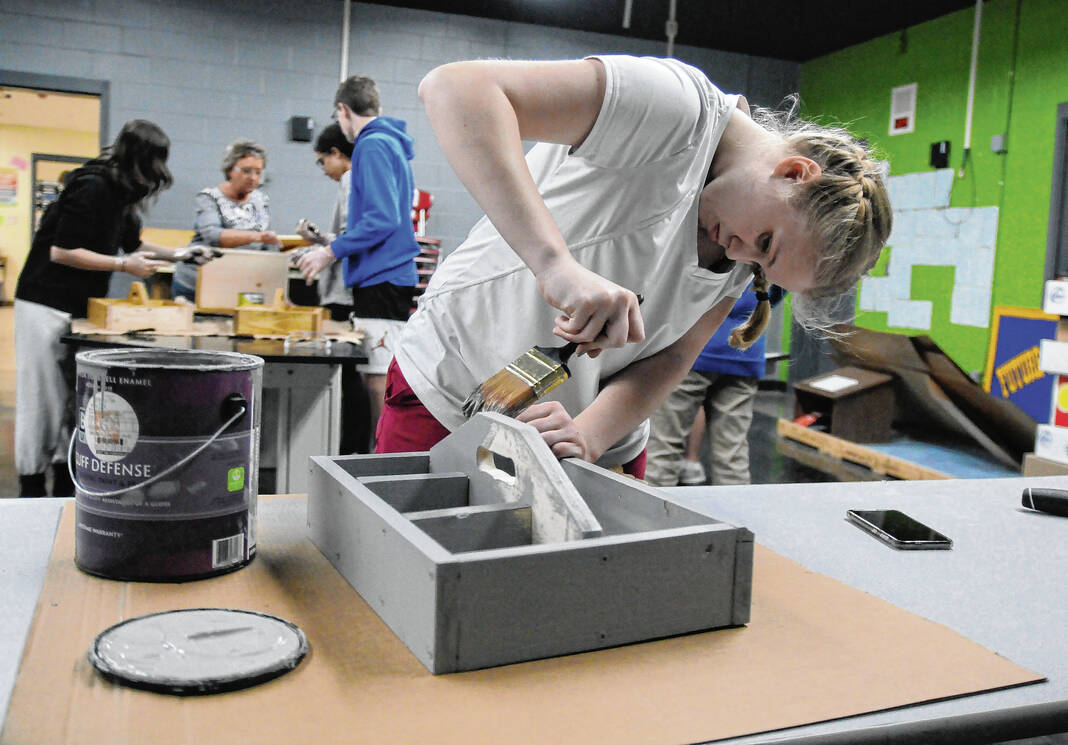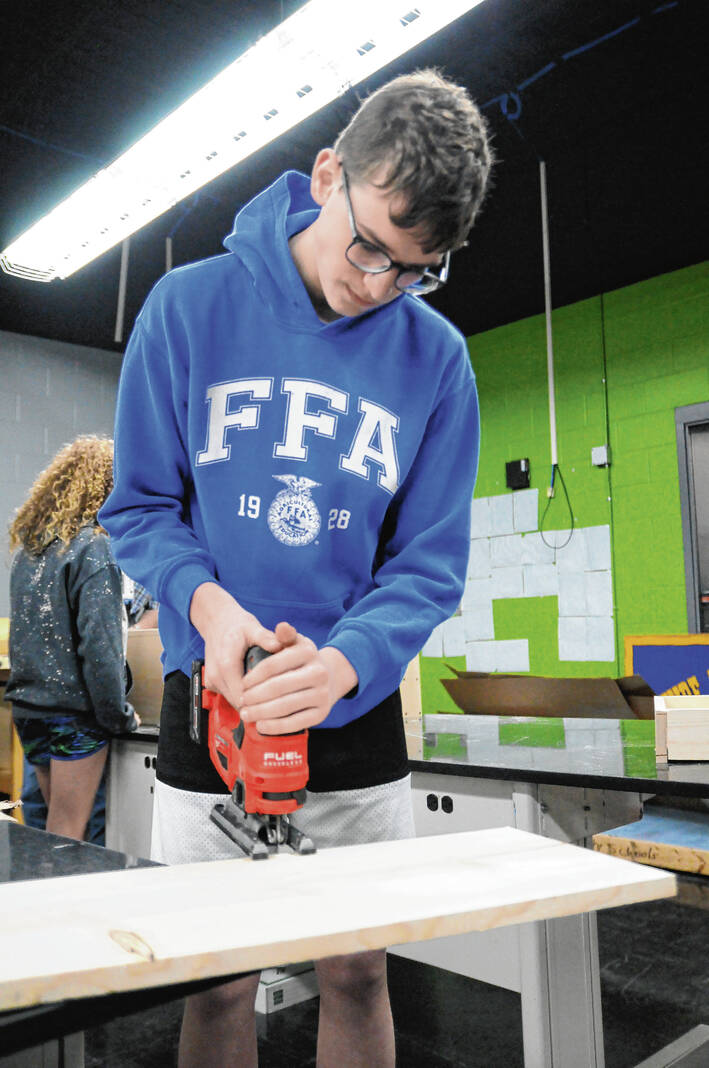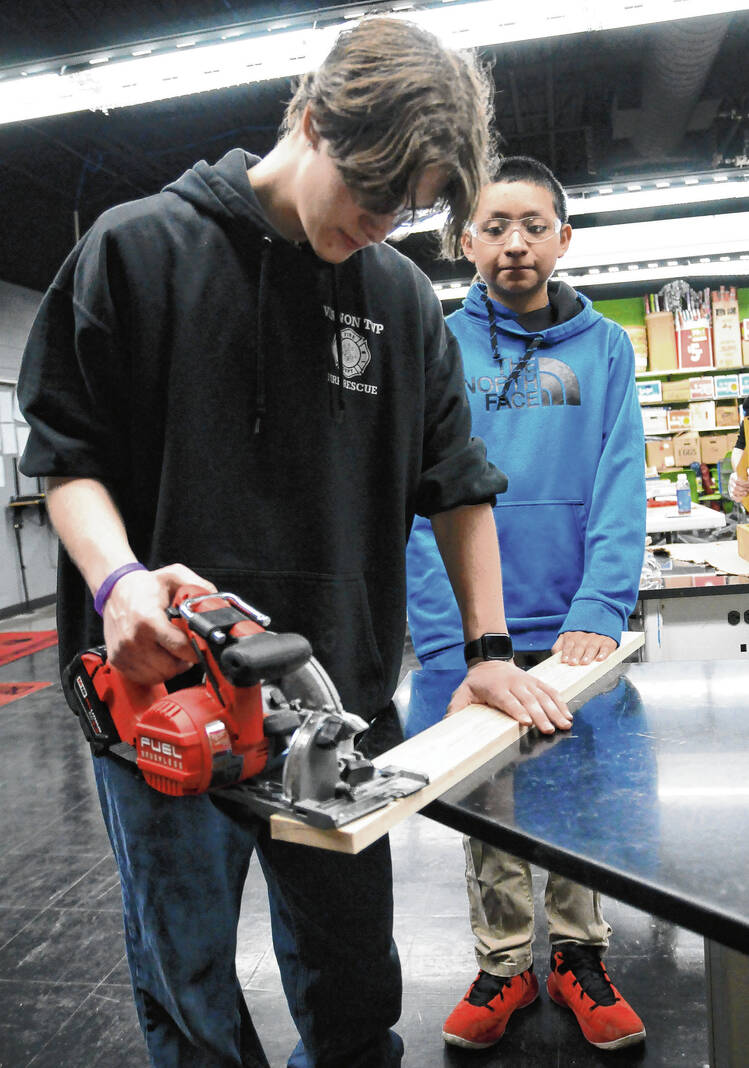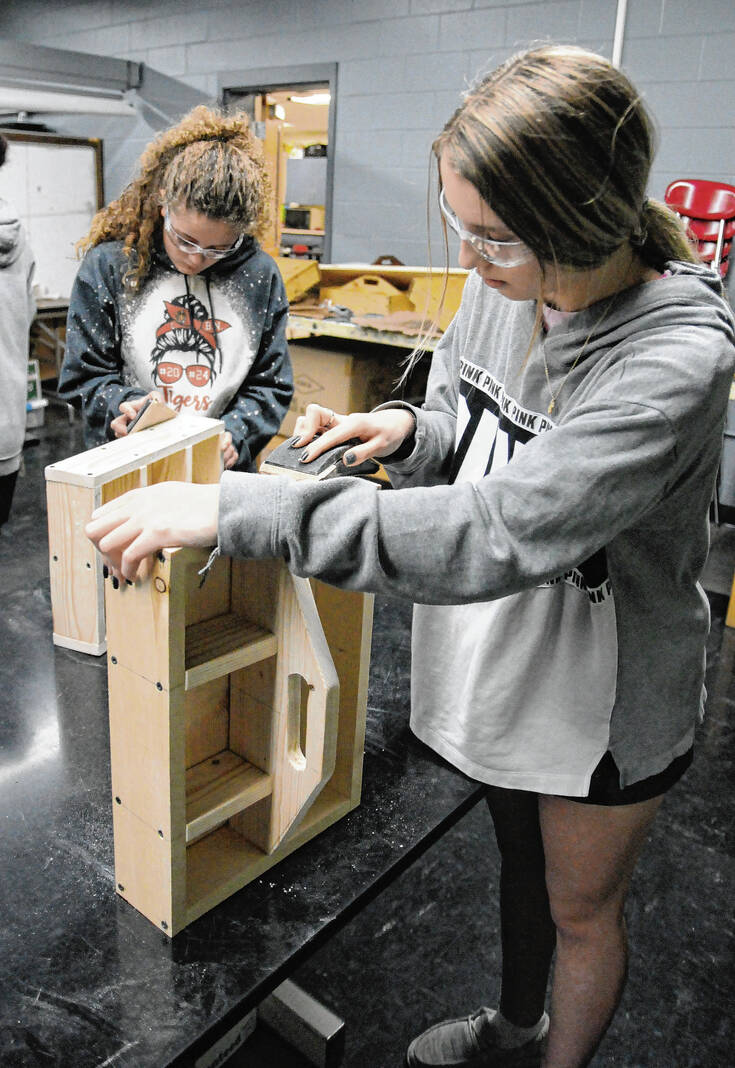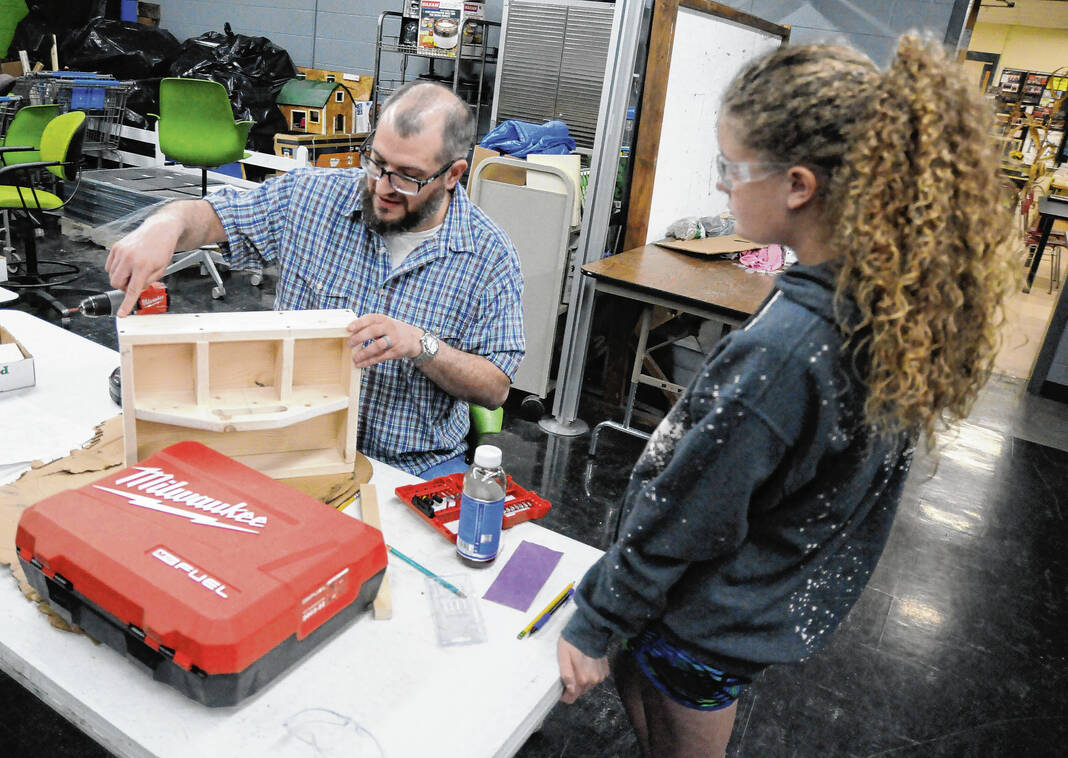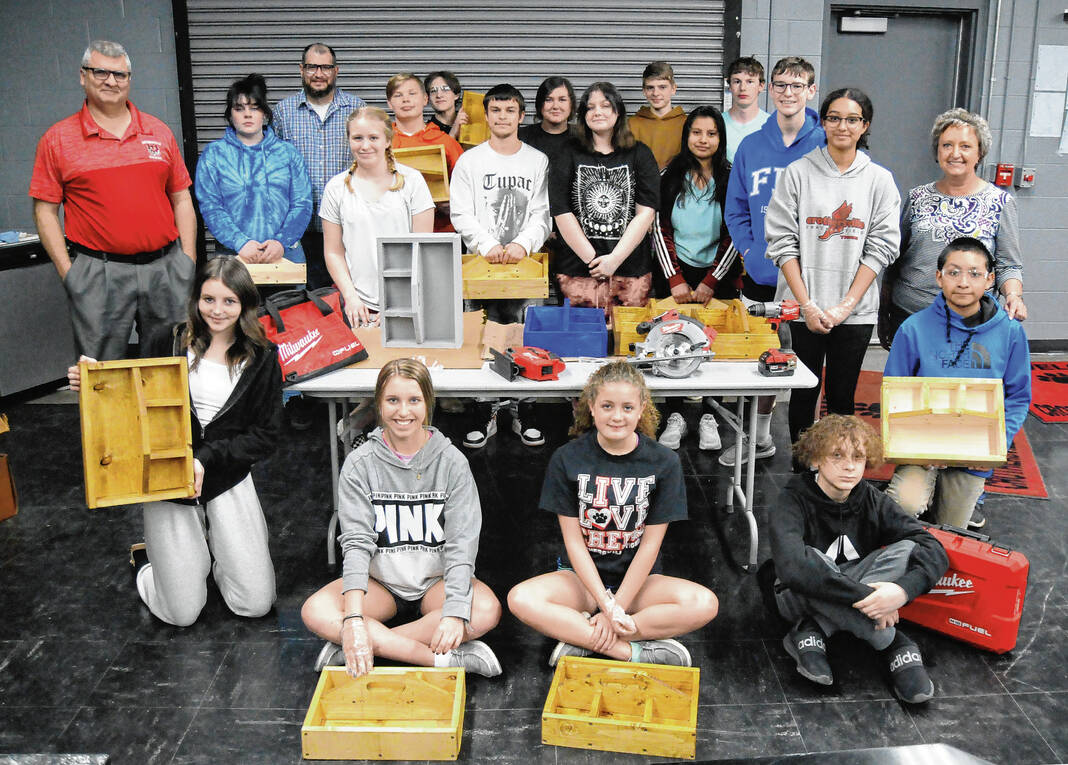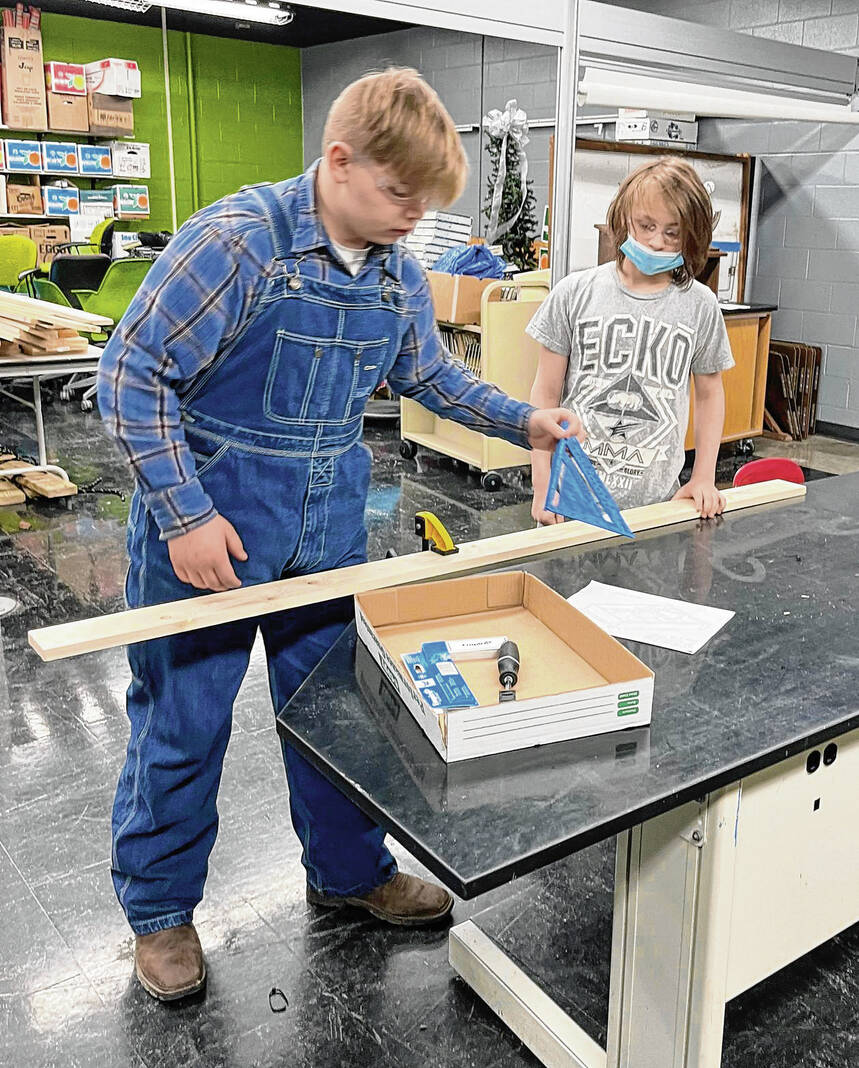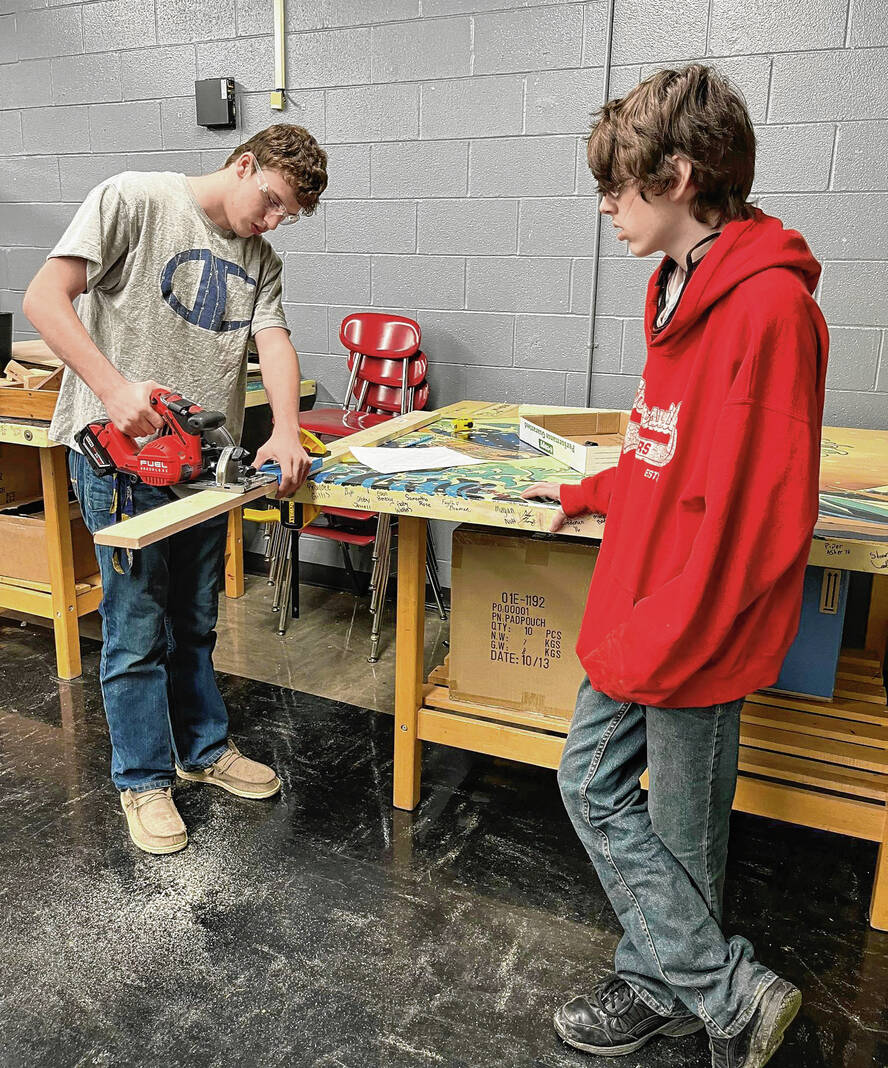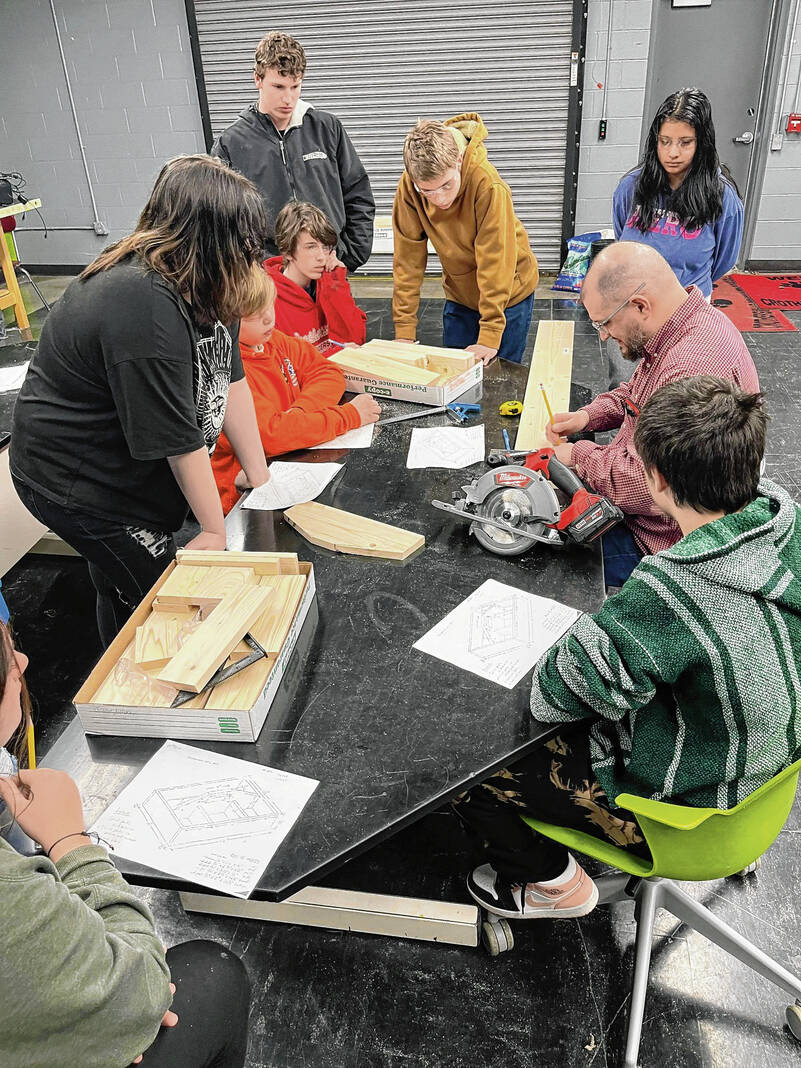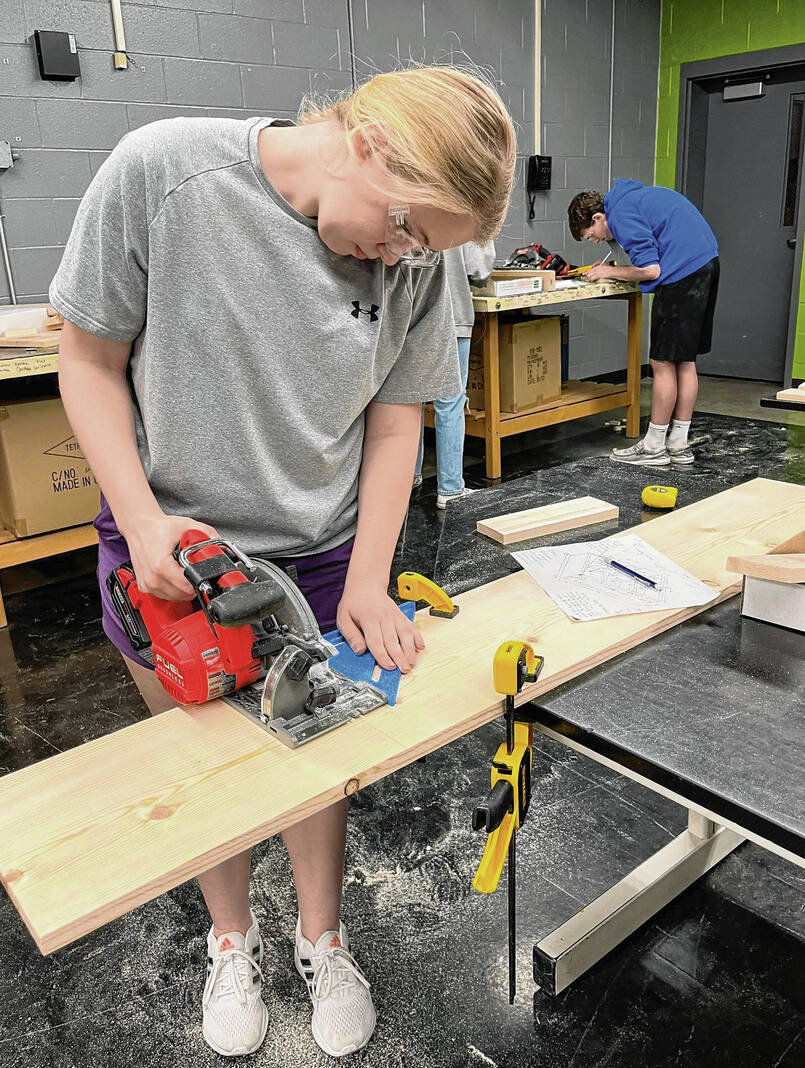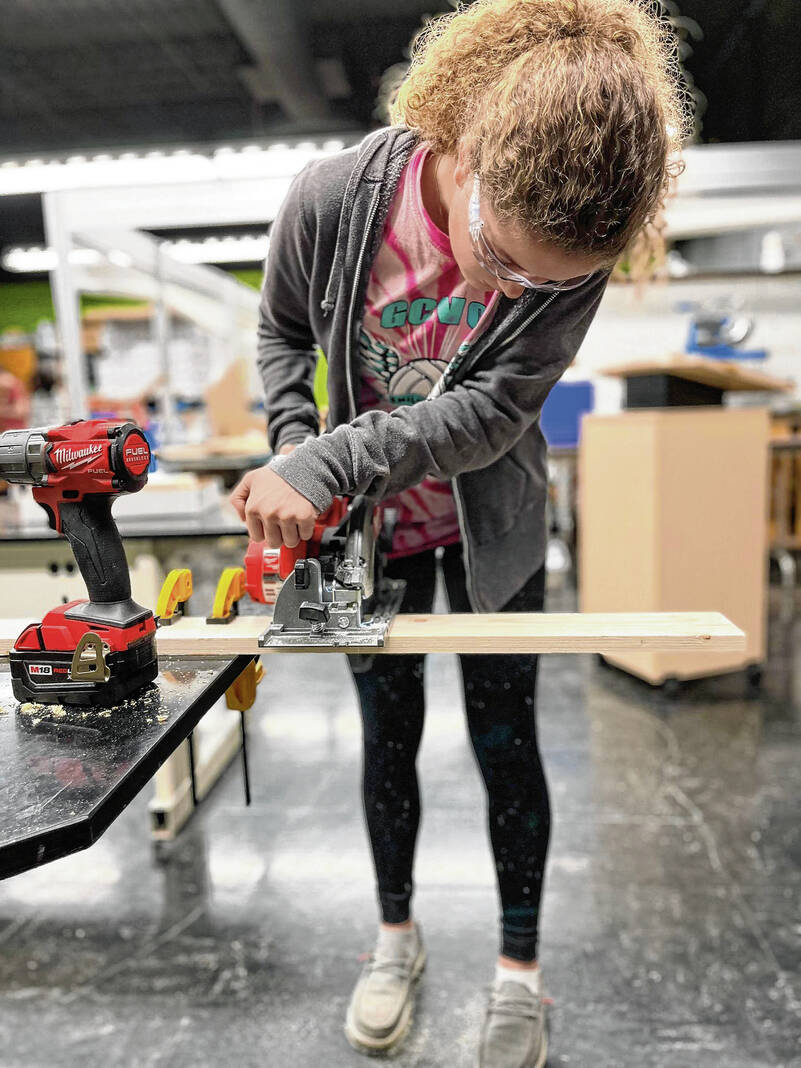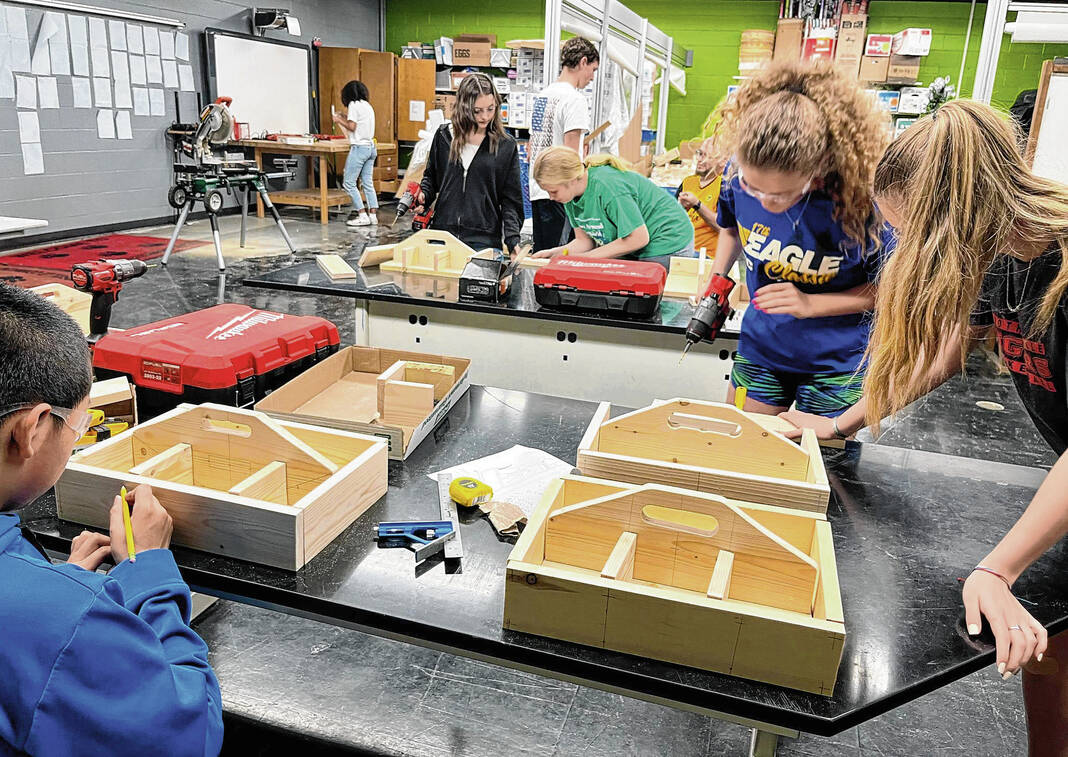CROTHERSVILLE — Starting a project to build wooden nail boxes, Linda Myers could tell her students were scared to use the power tools.
A few weeks later, they were asking if they have to do it.
Now, they are saying, “Can we get out there and do some more?”
Myers, the agriculture teacher and FFA adviser at Crothersville Junior-Senior High School, was surprised to learn the students didn’t have experience with power tools and even some hand tools.
The more they used them, though, the less intimidating and more comfortable it became.
“The biggest thing is I just wanted them to know that they can do it,” she said of the project in the fundamentals of ag class. “We were talking about this just before they came in how far they’ve come.”
The project came about after Myers received a $3,000 grant from Jackson County Industrial Development Corp., a $250 grant from the Community Foundation of Jackson County and some money from the school’s vocational account. That allowed her to buy basic battery-operated power tools, hand tools, carpentry tools and supplies, like sandpaper, clamps, screws, stain and lumber.
In fundamentals of ag, there’s a section of the class called ag mechanization, where Myers can teach construction, welding, small engines, concrete or electrical.
“I thought it was more feasible to do something in construction,” she said. “The primary purpose of this is not to build a nail box. The primary purpose is for them to learn everyday skills … and I want them to be comfortable using a power tool. I want them to be self-sufficient. I want them to not be afraid.”
So why nail boxes?
“This is my dad’s plans, and I made this as a freshman in ag class,” Myers said while holding a sheet of paper with her father Bob Myers’ hand-drawn sketch of a 16-by-10-inch nail box with all of the specifications.
In early March, the students learned how to properly and safely use the power tools and how to build the exterior of a nail box. Once they had four sides cut, they worked on the handle.
Myers brought in guidance counselor Tim Crane, a former industrial arts teacher, to share his expertise and assist the students.
Math was among the lessons involved because they had to figure the circumference of the handle, determine the halfway point and make angles by reading the plan.
“There were so many things that they learned besides just making a nail box,” Myers said.
Even though all of the students used the same plan, none of the nail boxes are perfect, Myers said. That’s what makes them unique.
“Just like each individual student is different, so are the boxes,” she said. “That’s what I told them. I said, ‘It has a personality.’ They are putting their personality into their box.”
Most students stained their nail box to give it a good shine. Others chose to paint theirs.
“Elated doesn’t even come close to what I feel about this,” Myers said of the finished products.
“I was nervous for them. I was apprehensive. I was intimidated. We never used these (tools) before and never turned them loose,” she said. “This facility isn’t 100% set up just for this, but we just made it work and started small. After they got a few pieces, after they got really comfortable, taught them how to use a saw, all of the safety things, they took off on their own. They really did super.”
Another thing that makes the nail boxes unique is the students can use them for a variety of purposes. Some may go with the intended purpose by putting nails, screws and hand tools in them. Others, though, came up with different uses.
Eighth-grader Zoe Bowman said when her family goes camping, she will put plastic forks and spoons in her nail box. In the winter, she will put it in her room and figure out another use.
She said she didn’t know how to build anything and hadn’t used power tools before this project, but now, she likes using a drill and sandpaper.
“It’s more experience for the future,” she said. “My parents want me to make other stuff now that I know how to do that.”
Fellow eighth-grader Hali Burton painted her nail box gray to match her room at home, and she plans to put plants in it.
“It’s fun to use tools,” she said, noting she would next like to build a bookshelf using the skills she learned with this project. “I’m able to do it on my own instead of asking for help.”
Eighth-grader Hayden Pilgrim said she plans to give her nail box to her dad to use to hold tools. She said her family also could use it during camping trips to hold napkins or flowers.
“Using the power tools, it was very scary because there were blades and stuff, but using screwdrivers and tape measures and rulers was pretty easy. I enjoyed it,” she said.
Classmate Baron Riley said he’s going to give his nail box to his mom to use as a planter.
He, too, said it was good to learn how to use power tools and build.
“I thought it was very cool,” he said. “Using it in the ag shop, it helped build my confidence for later on. Like if I’m going to make something else, it’s going to be good that I have knowledge of these tools.”
Myers said 20 students — eighth-graders, freshmen and sophomores — were part of the project.
If they are FFA members, she said their nail boxes will be on display in the Young MacDonald’s Farm building during the Jackson County Fair this summer.
Besides the nail boxes, Myers said her students are making two standup wooden eggs for kids to put their faces in and take pictures during the Easter egg hunt April 16 at Gaiser Park in Seymour.
Principal Doug Ballinger is as excited as Myers about giving students an opportunity to expand their horizons by learning how to build and use power tools.
The school also reintroduced industrial arts this semester after a long absence, and art classes are back, too.
Curriculum-wise, Ballinger said he sees some collaboration between ag, industrial arts and art next school year.
“It has just been a good thing,” he said. “It has just been a win-win.”

